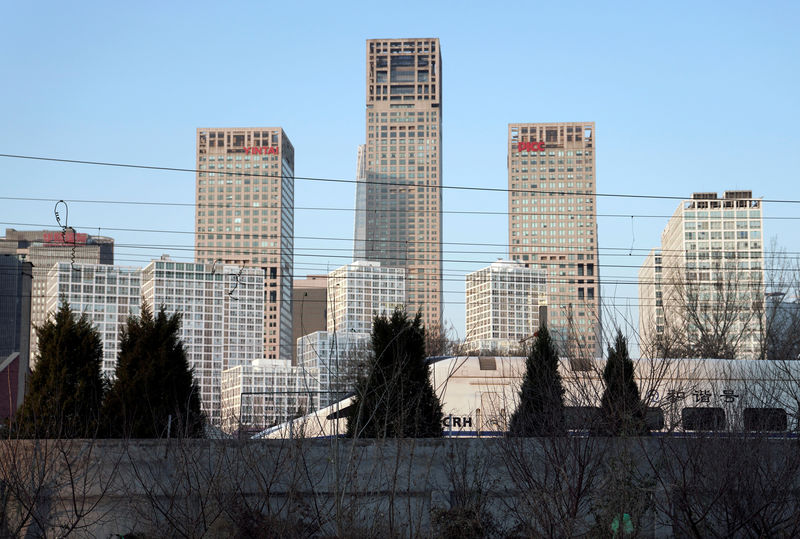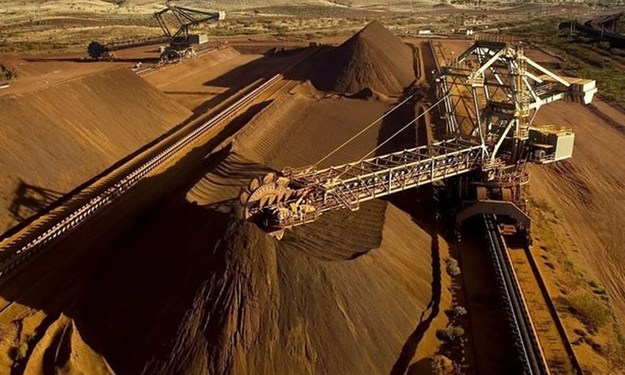 © Reuters. A CRH bullet train runs past Beijing’s central business area
© Reuters. A CRH bullet train runs past Beijing’s central business areaBy Kevin Yao and Fang Cheng
BEIJING (Reuters) – China’s industrial output and retail sales grew at a steady pace last month, while fixed asset investment cooled slightly, reinforcing signs of a modest slowdown in the world’s second-biggest economy amid a government crackdown on financial risks.
Tighter rules on polluting factories have also crimped production, while higher borrowing costs have weighed on overall economic activity.
Earlier in the day, China’s central bank raised interest rates marginally, hours after an anticipated U.S. Federal Reserve rate hike.
Thursday’s data showed industrial output rose 6.1 percent in November from a year earlier, just above analysts’ estimates for an increase of 6.0 percent, and below the 6.2 percent gain in October.
As northern China officially entered the heating season in mid-November, the government has also stepped up efforts to address winter smog, ordering many steel mills, smelters and factories to curtail or halt production to rein in pollution.
China’s fixed-asset investment growth slowed to 7.2 percent in the January-November period, the National Bureau of Statistics said on Thursday. Analysts had expected an increase of 7.2 percent, versus the 7.3 percent growth in the January-October period.
Along with the rest of trade-dependent Asia, China’s economy gained a lift from an exports boom that has spurred a synchronized uptick in global growth.
The Asian economic powerhouse grew at a surprisingly strong pace of nearly 6.9 percent through the first nine months of this year, buoyed largely by a recovery in its manufacturing sector thanks to a government-led infrastructure spending spree, a resilient property market and unexpected strength in exports.
The construction boom has driven up demand for everything from cement to steel and lifted prices of commodities. The war on pollution has cut both ways on prices of commodities – with fears of supply shortages due to production cuts lifting iron ore prices, for instance, while concerns of a demand-slowdown have dented other resources.
Earlier this month, China reported better-than-expected factory growth (PMI) and trade data for November. The upbeat data reinforced expectations of a more modest slowdown in growth, rather than a sharp downturn in the face of Beijing’s campaign to wean the economy off its addiction to debt.
Indeed, economic growth is still expected to easily meet or beat the government’s full-year target of around 6.5 percent.
Thursday’s data also showed fixed-asset investment by state firms rose 11.0 percent in January-November, quickening from 10.9 percent in the first ten months.
Growth of private investment slowed to 5.7 percent from 5.8 percent in January-October.
Retail sales gained 10.2 percent in November on-year, meeting expectations. Retail sales growth has hovered in the 10 to 11 percent range for the last two years.
Analysts had forecast they would rise 10.2 percent, slightly higher than the prior month, likely boosted by China’s annual 24-hour shopping binge on Nov. 11, known as Singles’ Day.
Sales on that day hit $38.25 billion, exceeding combined revenue for Black Friday and Cyber Monday in the United States.
Source: Investing.com



























